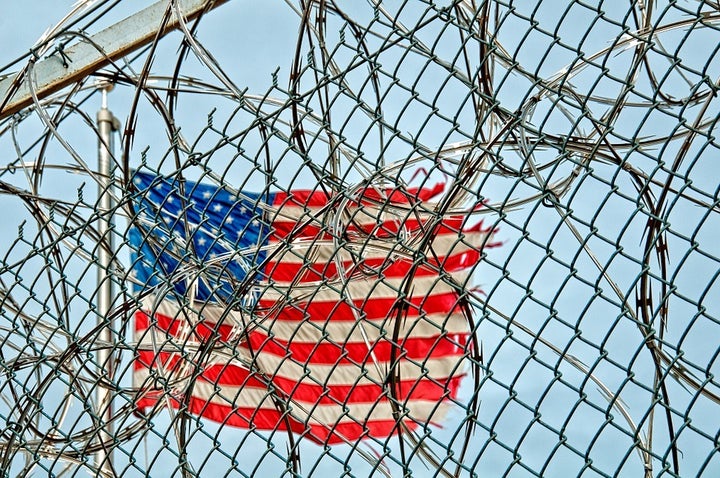
UNITED STATES AND THE PRISON SYSTEM
America’s first prison was built by the Quakers at the end of the 18th Century as an alternative to corporal and capital punishment, with the objective of rehabilitation through hard work, religious study, and penitence. Two hundred years later, the US is facing an unprecedented binge in prison construction, to the point that it now has the highest number of people under the control of the criminal justice system among “first-world” countries. Starting in the 1970s, the US legal system underwent a drastic shift by incarcerating more offenders and placing more people under surveillance for longer periods of time.
Such draconian shift in punishment, however, is said to have been strategically orchestrated to target impoverished Caucasians and minorities, particularly Latinas, Latinos, and African Americans. In effect, if incarceration rates continue, an African American male born in 2001 has a 1 in 3 chance of going to prison during his lifetime, and a Latino born in 2001 has a 1 in 6 chance, while a Caucasian male has a 1 in 17 chance of going to prison. The lifetime probability of going to prison among African American women (5.6%) is almost as high as for Caucasian men (5.9%), Latinas (2.2%), and Caucasian females (0.9%) have a much lower lifetime chance of going to prison.
Though, while the disproportionate representation of Latinas and Latinos in the criminal justice system is well documented, much less analyzed are the mechanisms and beliefs that govern the Latina/o experience. The focal question, then, in 21st Century America, beyond high race and ethnic variability in arrests, charging, prosecutions, convictions, sentencing, and time serve in jail or prison is:
“What are the forces paving the road to prison for Latinas and Latinos?”
Crucially, practices of social control not only need defined ideas of race and ethnicity to exist and expand, but also to legitimize penal policies as well as broader social elements, like savage poverty, structural marginalization, exploitation, and isolation, eventually leading to destructive personal choices, which, ultimately, result in the very phenomena that we are, arguably, trying to prevent: criminal behavior and consequent imprisonment.
As such, this article briefly explores historical and contemporary forces paving the road to prison for ethnic minorities, most of which are people of Mexican descent, in relation to their ethnic counterparts and sometimes even their African American and Caucasian counterparts. For instance, while elements of criminality might be similar for African Americans, Caucasians, and Latinas/os, the dynamics, like political rhetoric, for Latina/o offenders is quite different. Often characterized as the “Mexican problem,” Mexicans are accuse of taking jobs from Americans and abusing the educational system, health care, and welfare state.
In essence, it is easier to politically, legally, and morally rationalize and legitimize the harsh treatment of people who are essentially viewed as “outsiders,” and more so if they are perceived as “illegal aliens.” In reality, the war between Mexico and the US ended 163 years ago, but, clearly, the grudges remain, as indicated by the rancorous debate regarding the high-tech “virtual fence” spearheaded by the administration of former President George W. Bush and a major political “weapon” during the 2008 presidential elections. Today, the political retoric against minorities has not changed, as President Donald Trump, seemed to strategically manipulated the peoples vote using the old racist retoric and myths of a minority criminal invation.
AN HISTORICAL REMINDER
Colonialism and Conquest
Understanding the “march” to prison for ethnic minorities requires that one equates the development of the original American legal paradigm, including its foundation, ideology, mechanisms, and forces defining and shaping the everyday experience of Latinas and Latinos within the American society. As documented by various scholars, “fueled by notions of colonialism, slavery, conquest, stereotypes, hate, and the perception of threats, the history of race and ethnic relations in the United States has been vicious, vindictive, and bloody”, shaping and re-shaping criminalization and penal practices for minorities. In the case of Mexicans, the largest ethnic group in the US, the historical roots of conquest and colonialism continue to remain institutionalized in the American society, culture, and mentality. As noted above, the Treaty of Guadalupe Hidalgo in 1848 ended the Mexican-American War, but it did not stop the bitterness between Mexico and the United State but, instead, it gave birth to a legacy of hate. Consequentially, “the conquest set a pattern for racial antagonism, viciousness, and violence.
Deeply rooted in colonialism and conquest, structural mechanisms, including criminal justice policies, have been intentionally and strategically designed and implemented to prevent the advancement of minorities in America’s main institutions, like educational, financial, and political systems. For instance, with little education, lack of skills to compete in a highly competitive and technological job market, crime becomes a survival mechanism for many Latina/o offenders. Logically, savage poverty leads to crime, which in turn leads to arrests, indictments, prosecutions, convictions, and prison. Imprisonment then diminishes the probability of obtaining employment, especially well-paying jobs, upon release, which in turn further increases the probability of ending back in prison, resulting in a vicious cycle of poverty and crime that gets worse each time a person gets arrested, prosecuted, convicted, and sentenced to prison, eventually impacting the entire Latina/o community financially, socially, politically, and, ultimately, silencing Latinas and Latinos due to their inability to vote, as a result of a criminal record.
Together, with a life-long history of suppression, manipulation, marginalization, neglect, and isolation, Latinas and Latinos are enslaved in a system that has become self-governing because Americans, including ethnic minorities, have been socialized and psychologically indoctrinated, vis-à-vis the educational system, media, politicians, and criminal justice officials, to view and treat the American legal system as normal, without truly seeing the profound ramifications of such state of normalization, which includes participation in their own victimization, criminalization, imprisonment, and, ultimately, self-destruction.
To be continued . . . this piece is part of a sequence of articles about, “Latinos In The U.S And The Road To Prison”.
Sofía Espinoza Álvarez is an author, researcher, legist, and advocate. She is a law graduate and holds a Bachelor of Science degree in criminal justice. Álvarez has maintained an active professional career and an intense research and publication agenda, publishing various academic book chapters, journal articles, and books. Her books include, Immigration and the Law: Race, Citizenship, and Social Control (forthcoming); Ethnicity and Criminal Justice in the Era of Mass Incarceration: A Critical Reader on the Latino Experience (2017); and Latino Police Officers in the United States: An Examination of Emerging Trends and Issues (2015).
